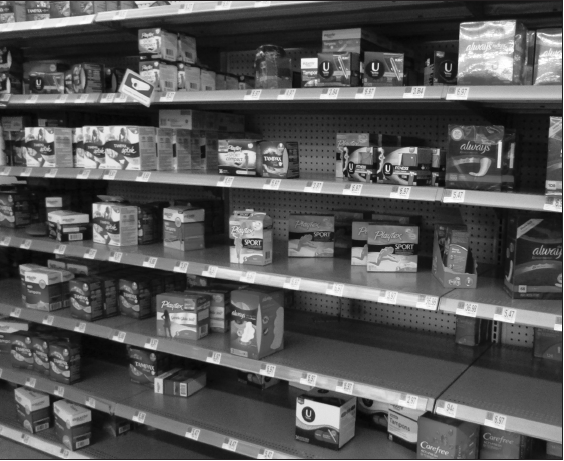When a woman first has her period, it is very rare that they are told about every product that is available to help them carry on life during the week-long menstrual pain and blood.
It appears it is the typical, “Here’s a huge and bulky pad. Use this,” method followed by the years later of trying to figure out how to use a tampon.
These are the two most typical types of period products. Convenience stores have shelves upon shelves carrying these items in different sizes. Women then must figure out which brand, size and, overall, which blood stopper they want to use.
Every woman is different; every vagina is different and every flow is different, but women are only told about the two basic types of period products. Therefore, leaving out many other alternatives that cost less (in the long run), require less time management and can be more eco-friendly and more vagina friendly.
Here is a list of some alternative period products that aren’t as well-known compared to the usual disposable tampons and pads.
1. Menstrual cups
Menstrual cups are number one because they are becoming more well known to the public as well as more accessible. They are inserted into the vaginal canal to collect the blood, instead of the normal absorption method, and can stay there for up to 12 hours. Most brands offer silicone versions, such as DivaCup, Lunette Cup, The Keeper Mooncup and The Lily Cup. There are also latex versions, which The Keeper offers.
For cleaning purposes, it needs to be washed at least two times a day.
Much like a tampon, this can be used for any activity, but does not cause a worry for toxic shock syndrome or a constant need to change. It is also eco-friendly and reusable, so after the initial cost you only need to worry about yearly replacements.
Many tend to think this would help during intercourse on a period, but it is advised to remove before sex because it sits low within the vaginal canal.
If you are wondering, you can also leave the cup in while going to the bathroom and not have to change it.
2. Reusable sea sponges
These are sponges that range in size (according to comfort not flow). First, you wet them and then squeeze any excess water out of the sponge before inserting into the vaginal canal. Therefore, it maintains wetness and does not have the horrible experience of pulling out a dry tampon.
Many even have strings attached, like a tampon, to make them easier to remove.
This is a 100 percent natural choice of period product, meaning there is no risk for toxic shock syndrome because there are no chemicals or fibers that can cause bacteria or scratches within the vagina.
3. Disposable menstrual cups
Like the reusable version, it is inserted and left to collect the blood for up to 12 hours. These are made of a hypoallergenic polymeric material, like the tip of a baby bottle nipple.
After use, these should be emptied and thrown away.
4. Period panties
These are more commonly talked about. They are panties that are made to catch and absorb the blood, kind of like a more comfortable pad.
Brands such as Thinx use a top layer to fight off bacteria, while another layer absorbs any menstrual blood making it leak-resistant. They even have a chart that compares different styles to how many tampons or menstrual cups one would go through.
Many women are unaware that there are multiple styles when it comes to period panties, but most brands have different styles to accompany everyone’s comfortability.
5. Cloth pads
The name is self-explanatory. They are more eco-friendly than regular pads because they can be reused by washing them by hand or machine.
One of the brands, Lunapads, stays in place by snaps underneath the underwear. These cloth pads can last up to at least three years, meaning the monthly costs of pads will diminish. They also offer panty liners.
6. Reusable tampons
These are sewn tampons that, instead of being disposed, can be washed and reused. However, they still act as a normal tampon, so the same eight-hour limit applies and toxic shock syndrome is still a risk.
Many say these are also harder to clean, although they are more eco-friendly.
